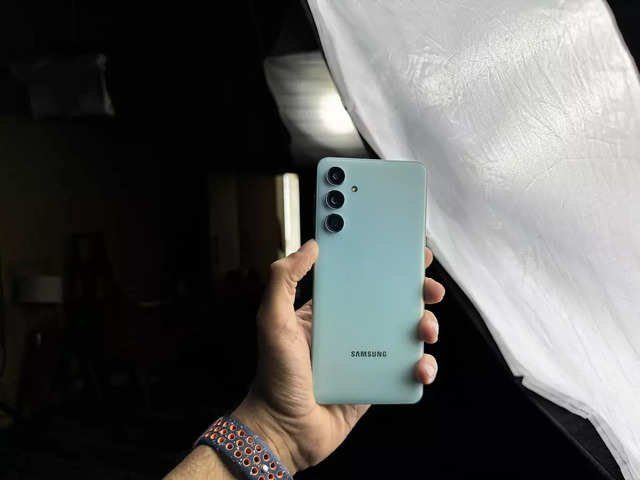
While brands tend to flock to the influencers with the most followers, it is also imperative to find more transparency in the entire influencer marketing segment
Despite more and more advertisers investing on influencer marketing, there are a few things they need to keep in mind
Dec 24, 2020, 14:03 IST
brands
What brands should keep in mind while investing on Influencer Marketing
Dec 24, 2020, 14:03 IST
Despite more and more advertisers investing on influencer marketing, there are a few things they need to keep in mind
Influencer marketing has been on the rise for the past few years.- However, it has also seen its fair share of scandals.
Rikki Agarwal , Co-Founder ofBlink Digital tells us how marketers can make the most out of investing on influencer marketing.
The last few years have seen a steady increase in brands’ reliance on influencers, and with it there has been an increase in investments in the influencer universe. The year 2020 saw most of us being stuck at our homes which led to us spending more time on various social media platforms. This further gave a boost to influencer marketing and many brands turned to both micro and macro influencers to reach out to their target audiences.
However, influencer marketing also comes with its fair share of cons. In August this year, rapper Badshah made headlines for having bought fake views for his video 'Pagal'. He is said to have paid Rs 75 lakh for around 75 million views on his video on YouTube.
A report by cybersecurity company CHEQ, in conjunction with the University of Baltimore economics department had stated that influencer fraud will cost advertisers $1.3 billion globally.
So how do advertisers interested in investing on influencers make the right moves? What are a few things they should take cognizance of while spending money on influencer marketing? And how do they make sure they don’t fall prey to this increasing influencer fraud? We asked a few of these questions to Rikki Agarwal, Co-Founder of Blink Digital. Blink Digital is a digital marketing agency that has worked with brands like KFC, Cadbury, ICICI, Amazon, Audi, One Plus among others and has also worked with influencers.
Agarwal walked us through the influencer ecosystem, gave us a sense of some of the issues in the industry and how brands can be careful while putting in their monies on influencers.
Excerpts:
Q) While influencer marketing has been witnessing a boom in the last few years, brands have voiced their concerns about a lot of things like influencers having
While influencer marketing has existed since the 18th century, influencer marketing has seen an unprecedented growth in the last. In an age where we are more online than offline, this segment of marketing becomes very lucrative for brands. In 2020, the entire marketing industry has seen a shift as brands quickly pivoted and strategized the way they are reaching out to people. As a digital marketing agency that does a lot of work in the influencer marketing segment, we are wary of the following things when we are considering influencer engagements for our clients.
The first and foremost foundational factor is the brand fitment with an influencer. It is the agency’s role to understand the brand ethos, ideology and what they mean to their customers when they’re looking at associating with influencers. This is where a lot of brands and agencies go wrong because you feel like here’s a list of the top 20 influencers that are currently popular on social media so let’s go ahead the mass approach way. Due to this, we see promotions and associations that don’t truly feel organic a lot of times. For instance, Blink Digital did the launch of Audible Suno for which we associated with social media influencers like
Measurability and transparency: While brands tend to flock to the influencers with the most followers, it is also imperative to find more transparency in the entire influencer marketing segment. From the problem of fake followers, low engagement rates to being able to understand the true impact of a campaign/brand’s association, we need to adopt the role of technology in bringing more measurability. At Blink, we believe that the internet cannot be stopped. The things that were inaccessible to most of us 10 years ago, is now a click away and that’s because of the internet. We need to leverage that access to create more impactful campaigns and associations for brands.
Additionally, another risk associated with influencer marketing is the unpredictability of scandals. Consider the Tiger Woods scandal from the 2000s, brands that were associated with him lost approximately $12bn as his personal life took a toll on the stocks of these companies. This is an unreliable space that brands and agencies need to be cautious as well as well prepared for it.
Q) Are influencer platforms soft targets for cybersecurity crimes?
While influencer platforms haven’t traditionally been the victims of cybersecurity crimes, it is important to point the rise of trolls and cyberbullying that pretty much all influencers face. In a climate where ads are being rescinded due to online pressures, or content creators are being called out for problematic behaviour, it is safer to look at a campaign or an association from multiple lenses and layers of scrutiny to ensure the smooth execution.
Q) There has been an increase in the number of fake influencers on social media platforms. How do brands ensure they don't fall prey to such influencers?
India has over 600 million people connected to the internet. So, the opportunities as well as challenges in the Indian influencer space are immense. Consider the recent fake follower fiasco of a very popular Indian rapper or just the sheer number of fake followers that are clogged up into the follower base of influencers — deriving that impact becomes even more complex for us agencies and brands.
Fake followers aren’t only unethical, it also creates a difficult situation for brands who trust influencers with their campaigns and product marketing. One can spot fake followers by visiting their follower list, checking the type of accounts that follow the influencer, among a variety other ways. Often, a fake/bot account has no display picture or have a number heavy username.
The same can also be figured via monitoring the account activity of an influencer. Genuine influencers tend to have a relatively steady growth in their follower and engagement numbers. The rate of their growth or their engagement will not spike abruptly.
There are also several free and paid services on the internet that provide a realistic picture of what’s really going on behind the curtain with influencer accounts.
At Blink, we use social media listening tools to ensure that our clients collaborate with the right kind of influencer for the campaigns.
Q) How does a brand measure the success of an influencer campaign?
The underlying goal for any brand lies in sales. However, sales shouldn’t be the first goal that one should set with an influencer because a consumer requires an average of 6-8 touches/touch points to get acclimatized to a brand. While sales should be the long-term goal of influencer marketing, it is important to keep the following factors in mind while working with an influencer at the onset of a campaign:
• Visibility of the brand
• Tonality, reception of the brand in the influencer’s content context
• Quantifiable aspects like likes, engagements, types of comments, referral links and sudden spikes of traffic to the brand’s social media and website.
The rationale of initiating an influencer marketing campaign should always be long-term (like what Lays has done in the recent years) so that people’s perceptions about the brand eventually alters to become more affable.
Q) What are a few things influencers should keep in mind while working on brand campaigns?
A few things that influencers should keep in mind while working on brand campaigns are –
• Influencers need to be cognizant about their own audience demographics& ethos while collaborating with brand
• Understand the brand fitment between their content & brands requirements purpose, whether it is in alignment with the brand ethos
• They must read about brands previous campaigns, how they are perceived in market & check if they have had any backlash in past
• Should research on how best they can prove ROI with their content & make the collaboration look natural
• Make sure their scope of work & expectation of brand association are in alignment
Q) What a few influencer marketing trends to look out for in 2021?
Few influencer marketing trends to look out for in 2021 would be:
Increase in the demand of micro-influencers: Companies are slowly incorporating micro-influencers in their ambit of marketing and things will change even more drastically in 2021. The micro-influencer segment is proving to be quite efficient in helping brands find a foothold in their respective markets. They've perfect targeting, authenticity and help increase the ROI in a much more impactful manner.
Performance Marketing is going to rule: The concept of performance-based influencer marketing is new and is at a rise. While the influencers don’t seem to be in favour of these deals, they may not have the option but to listen to what astute brands have to say.
Specialized Influencers: Big influencers cater to a variety of niches, which can make it difficult for businesses to get the expected results. However, we already see influencers becoming more specialized.
More Real Content: The new influencer marketing trend is to create authentic content for each brand that they collaborate with, that keeps users engaged without looking too filmy or sponsored to the viewers.
Q) What are the new metrics by which brands measure the success of influencer campaigns?
Blink digital measures the success of the influencer campaigns done for brand with help of following metrics -
• Total impressions
• Number of clicks to landing page
• Average engagement rate of campaign
• Conversions to customers
• Amount of user-generated content created
• Revenue
Q) How can brands make the most out of the rising trend of micro influencers?
Brands are moving towards micro-influencers & we will continue to see a rise in the coming years. Authenticity and reliability are more important than popularity now. 92% of customers trust a micro-influencer more than a traditional ad or an endorsement from celebs & over 82% of consumers are likely to buy something that has been recommended by the micro-influencer. By associating with micro-influencers brands can connect with their existing and their target audience by making most out of their micro influencers reach.
INSIDER INTELLIGENCE REPORTS







